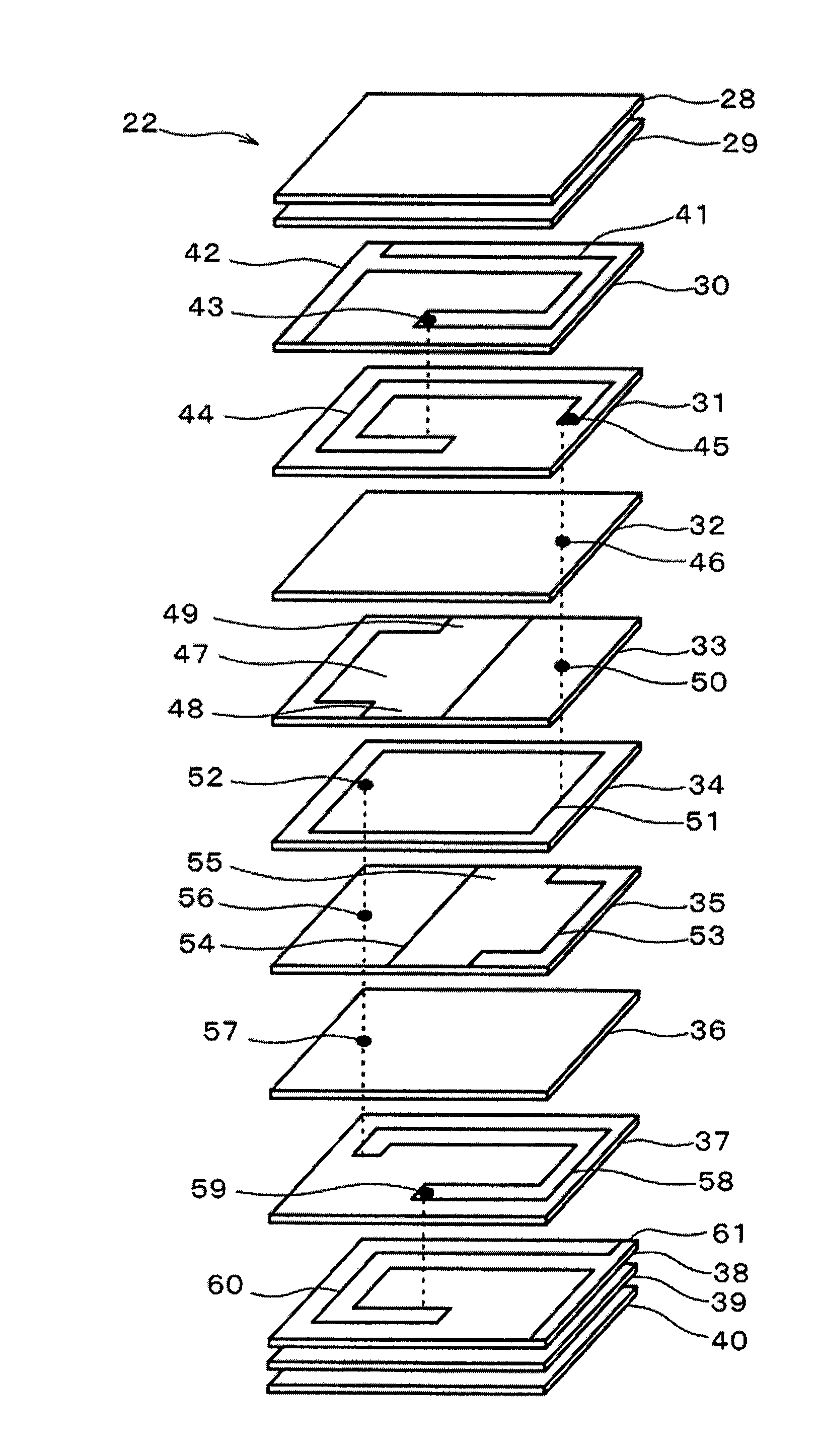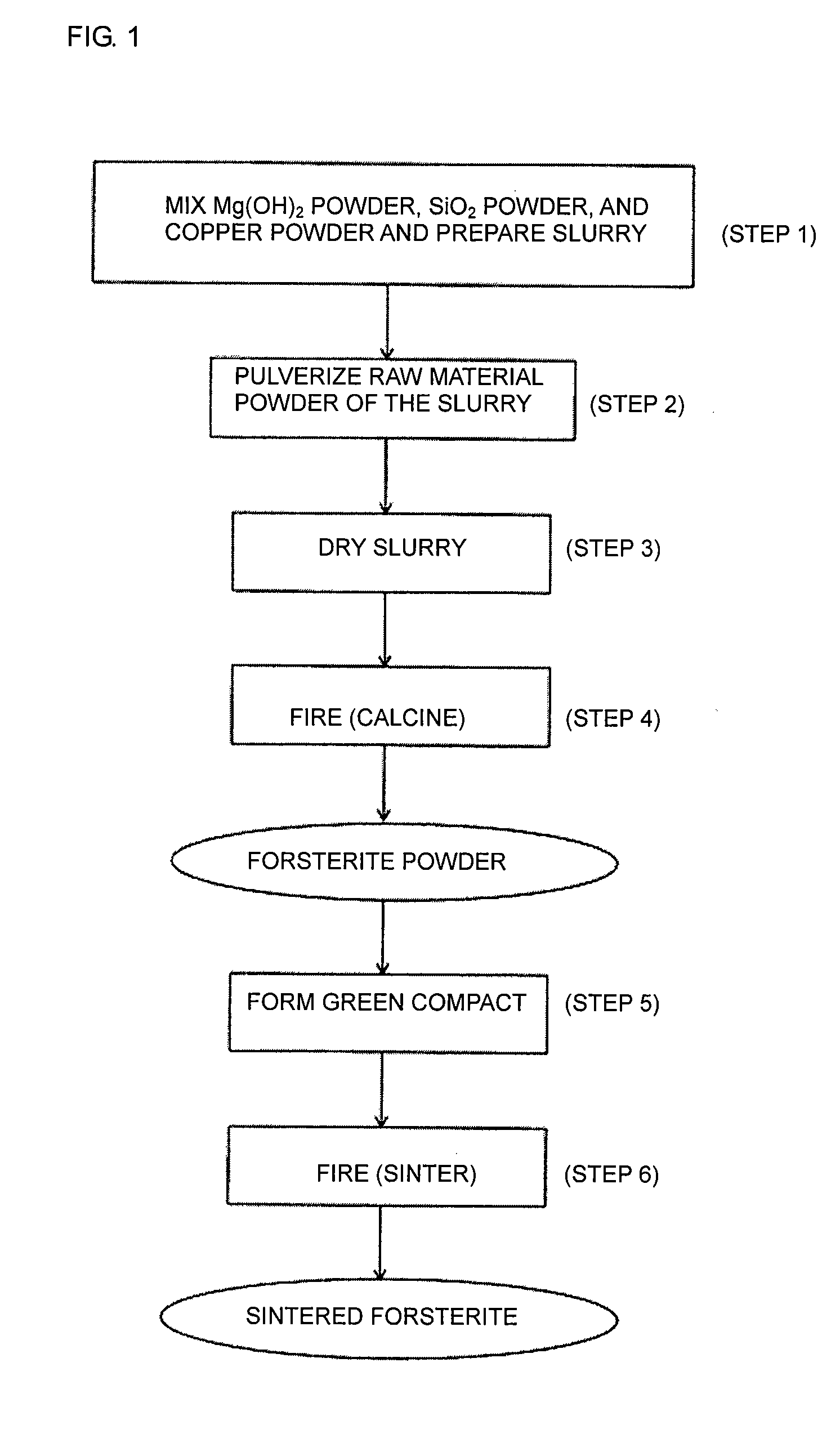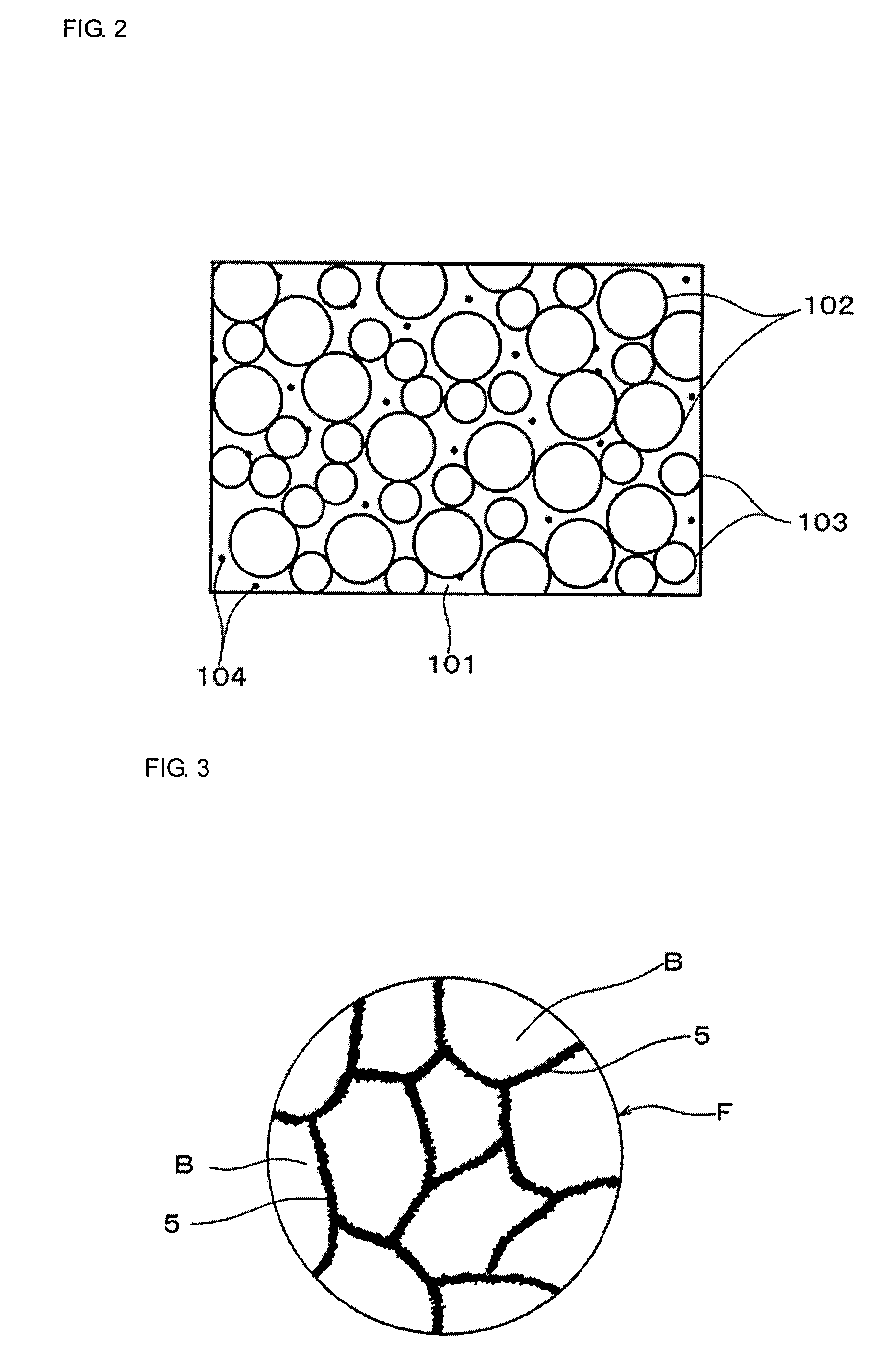Method for producing powder forsterite powder, forsterite powder, sintered forsterite, insulating ceramic composition, and multilayer ceramic electronic component
- Summary
- Abstract
- Description
- Claims
- Application Information
AI Technical Summary
Benefits of technology
Problems solved by technology
Method used
Image
Examples
example 1
Production of Forsterite Powder
[0098]In Example 1, forsterite powders were produced by the following procedure.
[0099]The method for producing the forsterite powders of Example 1 will now be described with reference to FIG. 1, which shows the production process.
(1) Mixing of Raw Materials and Preparation of Slurry
[0100]First, Mg(OH)2 powder and SiO2 powders were weighed out so that the molar ratio of MgO to SiO2 (Mg(OH)2 / SiO2) of the forsterite (2MgO.SiO2) powders obtained after firing (calcination) was 1.97.
[0101]In addition, a copper sol (dispersing medium: water) was weighed out so that the contents of copper in the forsterite powders obtained after firing (calcination) were the values shown in Table 1.
[0102]The Mg(OH)2 powder used in Example 1 had an average particle size of 2.5 μm, and the SiO2 powder had an average particle size of 1.5 μm.
[0103]The copper sol had an average particle size of less than 0.05 μm. These raw materials were added to a dispersing medium, namely, pure w...
example 2
[0118]FIG. 4 is a sectional view of a ceramic multilayer module 1 as an example of a multilayer ceramic electronic component produced using an insulating ceramic composition containing a forsterite powder according to the present invention. FIG. 5 is an exploded perspective view of the ceramic multilayer module 1 shown in FIG. 4.
[0119]The ceramic multilayer module 1 includes a multilayer ceramic substrate 2. The multilayer ceramic substrate 2 includes a laminate of insulating ceramic layers 3 and high-dielectric-constant ceramic layers 4. The high-dielectric-constant ceramic layers 4 are between the insulating ceramic layers 3.
[0120]The insulating ceramic layers 3 are formed of insulating sintered ceramic compacts produced by firing an insulating ceramic composition according to the present invention. The insulating ceramic layers 3 have a relatively low relative dielectric constant of, for example, 10 or less.
[0121]Specifically, the insulating ceramic composition used for the insul...
example 3
[0137]FIGS. 7 and 8 are diagrams of an LC filter 21 as another example (Example 3) of a multilayer ceramic electronic component produced using an insulating ceramic composition containing a forsterite powder according to the present invention. FIG. 7 is a perspective view showing the appearance of the LC filter 21. FIG. 8 is an equivalent circuit diagram of the LC filter 21. FIG. 9 is an exploded perspective view of an unfired laminate 22 as an intermediate product to be subjected to a firing step in the production of the LC filter.
[0138]In FIG. 7, the LC filter 21 of Example 3 includes a component body 23 having a multilayer structure of insulating ceramic layers, terminal electrodes 24 and 25 disposed on opposing ends of the component body 23, and terminal electrodes 26 and 27 disposed midway along the sides of the component body 23.
[0139]In FIG. 8, the LC filter 21 includes two inductances L1 and L2 directly connected between the terminal electrodes 24 and 25 and a capacitance C ...
PUM
| Property | Measurement | Unit |
|---|---|---|
| Length | aaaaa | aaaaa |
| Fraction | aaaaa | aaaaa |
| Fraction | aaaaa | aaaaa |
Abstract
Description
Claims
Application Information
 Login to View More
Login to View More - Generate Ideas
- Intellectual Property
- Life Sciences
- Materials
- Tech Scout
- Unparalleled Data Quality
- Higher Quality Content
- 60% Fewer Hallucinations
Browse by: Latest US Patents, China's latest patents, Technical Efficacy Thesaurus, Application Domain, Technology Topic, Popular Technical Reports.
© 2025 PatSnap. All rights reserved.Legal|Privacy policy|Modern Slavery Act Transparency Statement|Sitemap|About US| Contact US: help@patsnap.com



